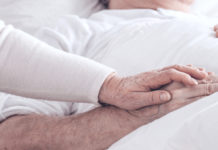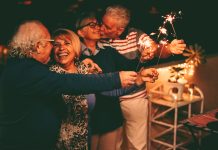After a diagnosis of dementia, it’s normal to feel overwhelmed. You may wonder, “What is the difference between dementia and Alzheimer’s” or “What is Lewy body dementia?”
Understanding the finer details of this disease can help you identify what ways you or a loved one might be affected. Read on for answers to common questions about dementia and Lewy body dementia and tips for managing the disease as it progresses.
What Is Dementia?
Losing some brain cells, or neurons, is a normal part of aging. However, dementia causes the body to lose brain cells at an alarming rate. Over time, neural connections are severed, troubling symptoms occur, and brain cells begin to die.
Dementia can cause a range of symptoms, primarily affecting cognitive function. For example, thinking, memory, reasoning, and logical activities are interfered with. While dementia can range from mild to severe, it progressively worsens, affecting an individual’s daily life, activities, and ability to function at any disease stage.
Unfortunately, dementia affects more than just the mind. This means memory loss isn’t the only red flag, and physical and emotional aspects of life can also be affected. Signs, such as sundowners syndrome, may make life more complicated.
Different Types of Dementia
Dementia is technically an umbrella term, meaning it’s a word used to describe several neurological conditions causing brain function to worsen. The different types of dementia include:
- Alzheimer’s disease
- Frontotemporal dementia
- Lewy body dementia (LBD)
- Vascular dementia
Although it’s less common, Alzheimer’s disease and frontotemporal dementia can be diagnosed in younger people, with rare cases occurring in individuals in their mid-30s or 40s. On the other hand, LBD and vascular dementia are typically diagnosed in adults in their 50s or 60s.
Mixed dementia is also possible, and occurs when an individual has two or more types. This presents a dilemma for diagnosis since multiple or conflicting symptoms can be misleading.
What Is the Main Cause of Dementia?
As mentioned above, the cause of dementia is changes to certain brain regions that damage their neural connections. Scientists aren’t quite sure what exactly causes this breakdown, but research has shown that there may be a genetic component for some people.
While conditions like dementia and Alzheimer’s disease are related, it’s important to recognize the differences. Although Alzheimer’s disease, frontotemporal dementia, and LBD involve abnormal protein deposits, each can be caused by different types of proteins and involves a different deposit location. Vascular dementia is different, too, and can be caused by a range of other conditions, such as a blood clot or stroke.
Being aware of the different types of dementia can help you spot symptoms quicker. For example, knowing the average age of onset can help you differentiate Alzheimer’s from LBD.
What Is Lewy Body Dementia?
Lewy body dementia (LBD), a specific type of dementia, is one of the more common types in older adults. Abnormal protein deposits, called “Lewy bodies” build up on brain cells. This causes muddled messages from the brain to different body parts, resulting in symptoms.
Similar to how dementia is an umbrella term, there are two types of dementia included in the LBD category. Dementia with Lewy bodies and Parkinson’s disease dementia are both considered Lewy body dementias. Although technically different in their onset of symptoms, Parkinson’s disease is often grouped with LBD since the development of Lewy bodies can contribute to the deterioration.
Symptoms of Lewy Body Dementia
LBD shares some symptoms of dementia of other types. Common symptoms include:
- Cognitive decline, including trouble organizing or illogical ideas
- Hallucinations, typically visual hallucinations
- Movement symptoms such as a lack or loss of coordination
Some symptoms that are more unique to LBD include:
- Difficulty concentrating, paying attention, or staying alert
- Loss or lack of facial expression
- Rigid or stiff muscles
- Sleep disorders
While some symptoms of dementia may appear early, the typical age of diagnosis for LBD is 50 years or older. Family history is also a risk, and men seem to be affected slightly more than women.
How to Manage Lewy Body Dementia
An LBD diagnosis can feel overwhelming, and you may ask, “What’s next?” The following tips can help you manage LBD in a way that makes daily life easier.
Reduce Risk Factors
An important part of preventing or managing dementia is reducing risk factors. Addressing the following risk factors for dementia and other age-related conditions may be beneficial for you or a loved one::
- Alcohol or tobacco use
- Head injuries
- Hearing problems
- High blood pressure
- High blood sugar
- Lack of mental stimulation
- Lack of physical activity
- Loneliness or lack of connection
- Overweight or obese
- Poor diet
- Sleep disorders
Scientists are still investigating how lifestyle factors—like diet and nutrition—play a role in dementia development. In the meantime, Silver Cuisine may be a great fit if you’re looking for an easy meal solution!
Identify Which Activities of Daily Life are Affected
Inevitably, LBD will impact daily activities. Identifying challenges and barriers can help you move toward solutions.
For example, finding adaptive equipment is a great next step if you (or a loved one) struggle to feed yourself. This type of home care equipment can make mealtimes more manageable.
Keep in mind that taking steps to ensure your safety around the house may seem like a great undertaking at first, but doing so can make life easier in the long run.
Understand the Rate of Decline
There is a wide range of decline for individuals with dementia. For some, the time from diagnosis to death can be as little as two years or as many as 20, although the average is five to eight years. While this may seem bleak to discuss with the doctor, knowing how much time you have left with a loved one can help you make the most of your remaining years.
Consider Both Medications & Alternative Therapies
Some medicines may be able to help with certain symptoms. Often, medicine can be introduced to help manage cognitive, psychiatric, or movement-related symptoms.
Medicine isn’t the only type of treatment that may be able to help. The following types of therapy may help individuals or caregivers tackle the day with more enjoyment or ease:
- Art or music therapy
- Mental health therapy
- Occupational therapy
- Physical therapy
- Speech therapy
While dementia is a progressive disease, treatments and therapies may be able to improve the quality of life for some time. Working with a healthcare team can be useful in deciding what’s right for you or your loved one.
Seek Out Support
Whether in the form of a support system or a support group, support is a crucial part of dealing with dementia. Finding individuals who can empathize can help provide both emotional and social support. Connecting with others can also help caregivers find tips and tricks to help with common challenges.
A Last Word on Lewy Body Dementia
Dementias like LBD can take a big toll on individuals and their caregivers. While challenges will be part of the journey, steps can be taken to make day-to-day life easier and more enjoyable. Working with a support group, caregiver resources, or a healthcare practitioner can help.
References:
National Institute on Aging. Understanding Different Types of Dementia. Nia.nih.gov. Accessed 2023.
National Institute of Aging. What Is Lewy Body Dementia? Causes, Symptoms, and Treatments. Nia.nih.gov. Published July 2021.
National Institute on Aging. What Is Dementia? Symptoms, Types, and Diagnosis. Nia.nih.gov. Published December 2022.
National Institute on Aging. 4 Tips for People Living With Lewy Body Dementia. Nia.nih.gov. Published July 2021.
National Institute of Neurological Disorders and Stroke. Lewy Body Dementia. Ninds.nih.gov. Published March 2023.
National Library of Medicine. Lewy Body Dementia. Medlineplus.gov. Published May 2019.
U.S. Department of Health and Human Services (HHS). Can I Prevent Dementia? Alzheimers.gov. Accessed June 2023.






